Founded in 1856 as the display hall for the Geological Survey of Canada, the Canadian Museum of History is one of North America’s oldest cultural institutions. It is the most visited museum in Canada, with more than one million visitors each year.
The Canadian Museum of History's current home was designed by Aboriginal architect Douglas Cardinal and inaugurated in 1989. Public and curatorial wings each have their own building, located on the same site near the Ottawa river. They are architectural monuments to the local landscape 15,000 years ago, when the glaciers were receding and the first humans arrived in Canada. The buildings are clad in rough-split Tyndall limestone from Manitoba.
Public wing
The public wing contains exhibition spaces for the permanent and temporary exhibitions as well as event spaces and a Omnimax movie theater.
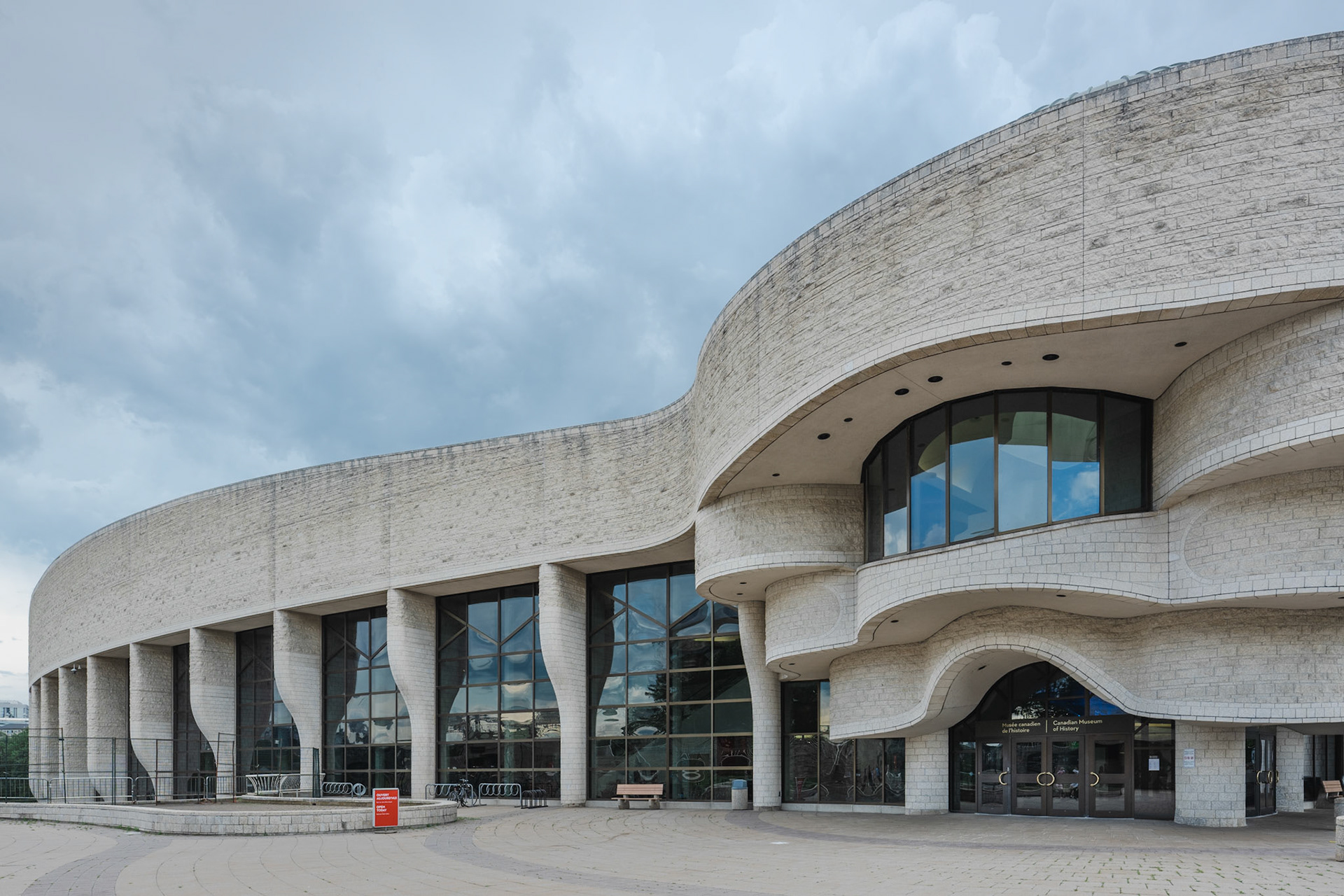
Canadian Museum of History - entrance
Clearly visible from the outside is the Grand Hall with its six-storey window wall. It is shaped like a canoe. In order to protect the museum exhibits from the great amount of natural light entering through the windows, the Grand Hall faces North-East so that direct sunlight only hits it in early morning. In addition, the windows are triple glazed, tinted and coated with a film.
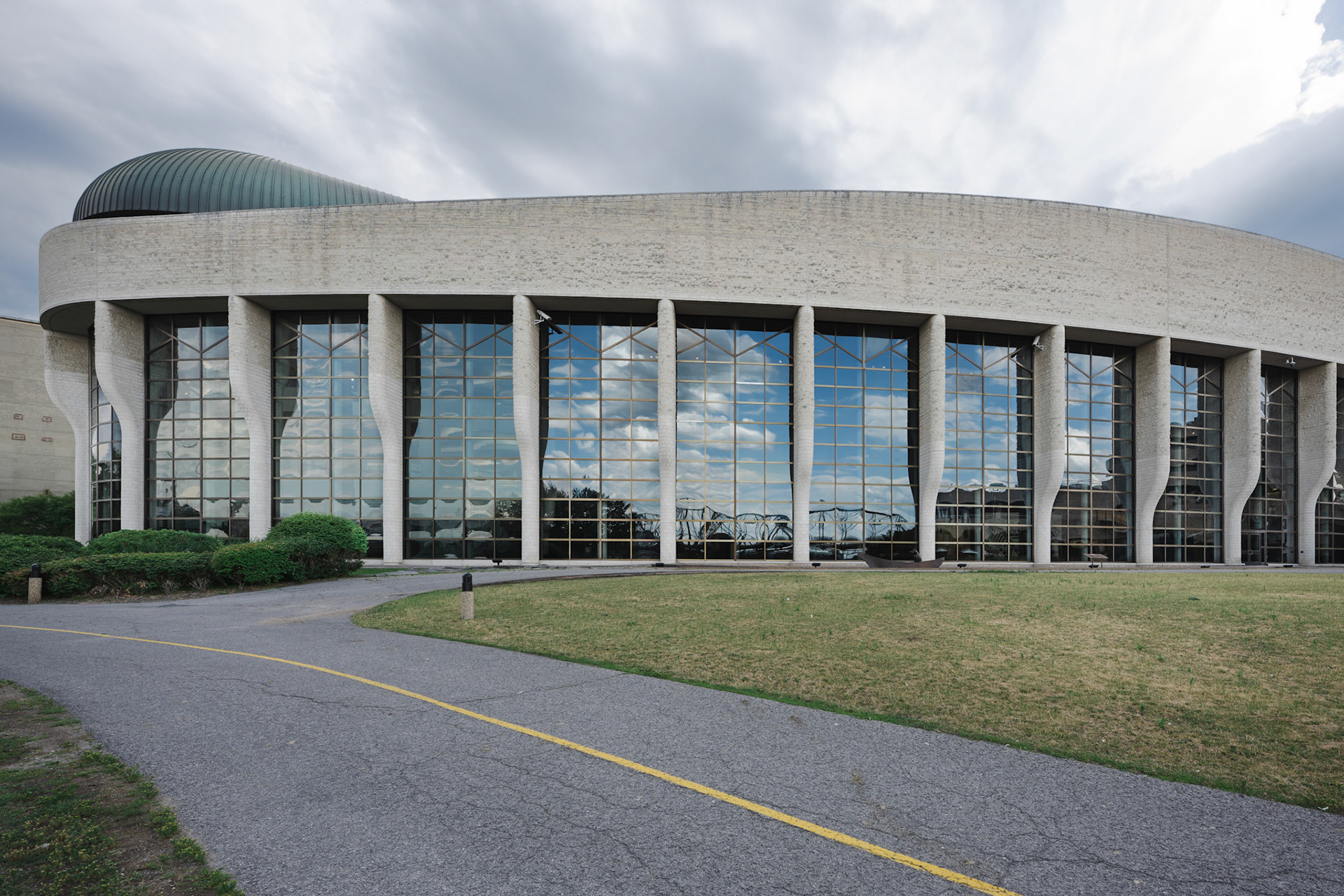
Grand Hall - outside
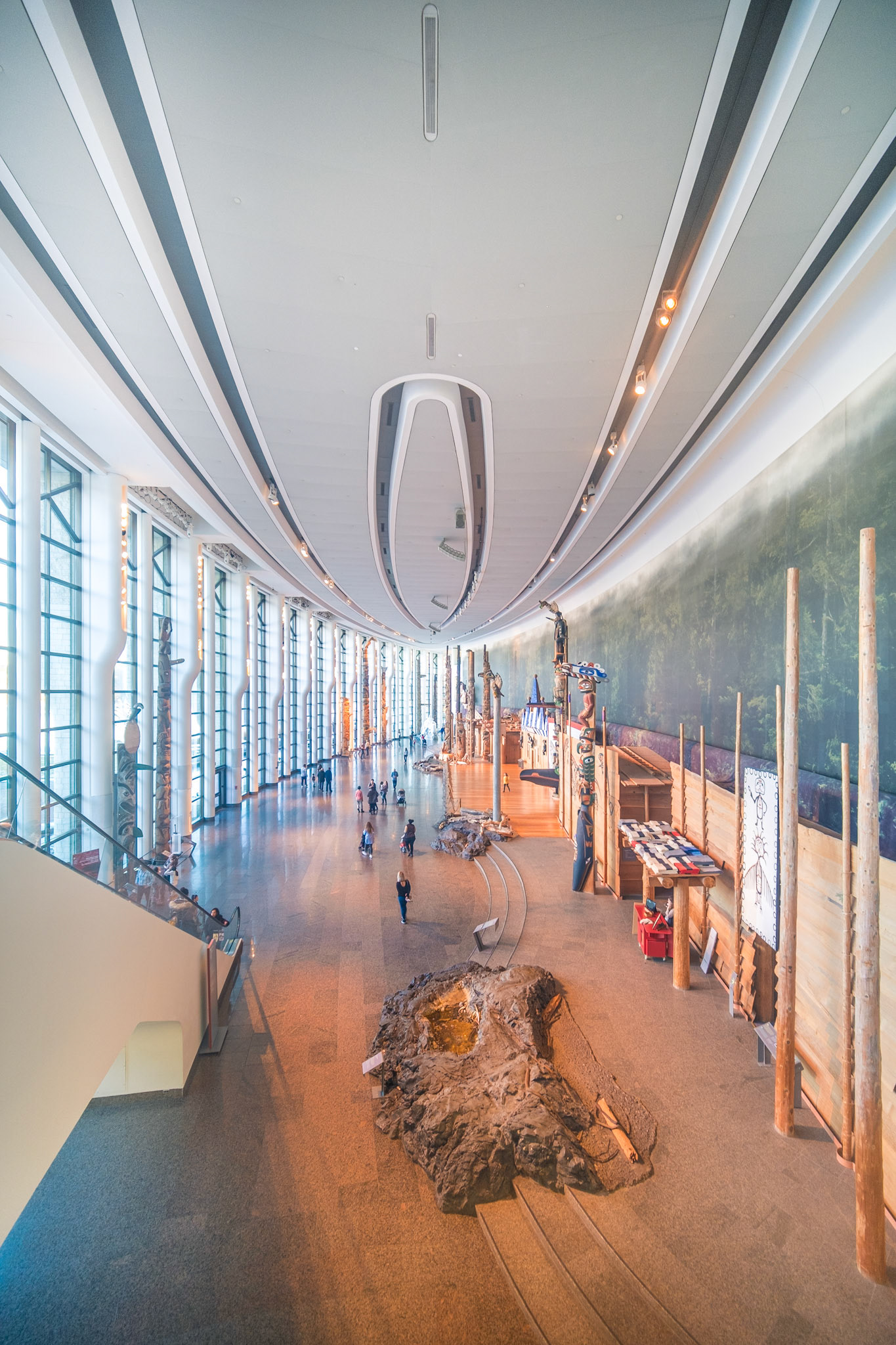
Grand Hall - inside
The Grand Hall offers an introduction to the history of the First Peoples of Canada’s Pacific Coast. It contains the world's largest indoor collection of totem poles. The original plaster pattern for Spirit of Haida Gwaii by Bill Reid can also be viewed, in front of a large transformation mask created by Kwakwaka'wakw artist Beau Dick.
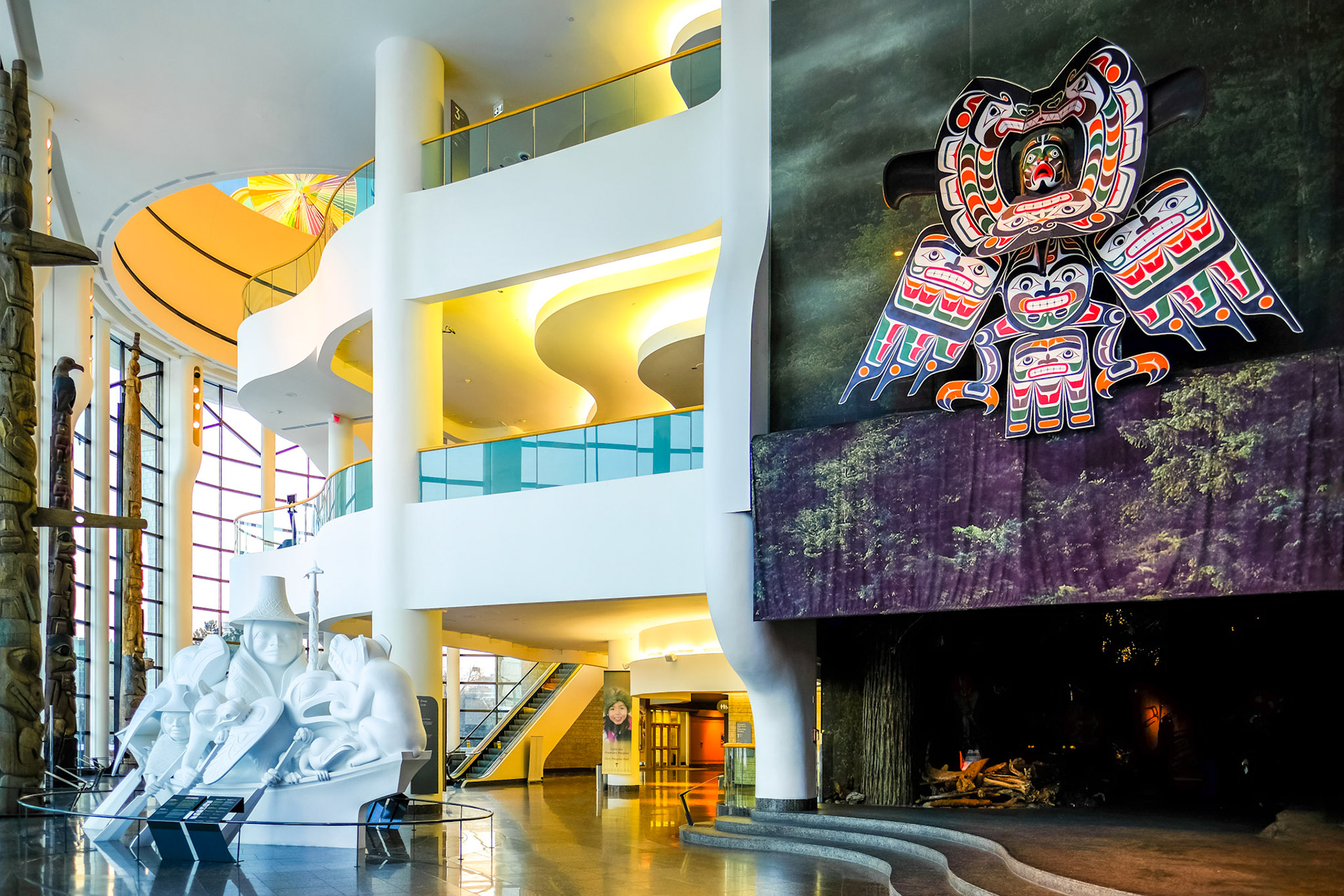
Grand Hall - original plaster pattern for Spirit of Haida Gwaii by Bill Reid and transformation mask by Beau Dick
The abstract painting Morning Star by Alex and Dean Janvier in the dome of the Grand Hall has a surface of 418 square meters !
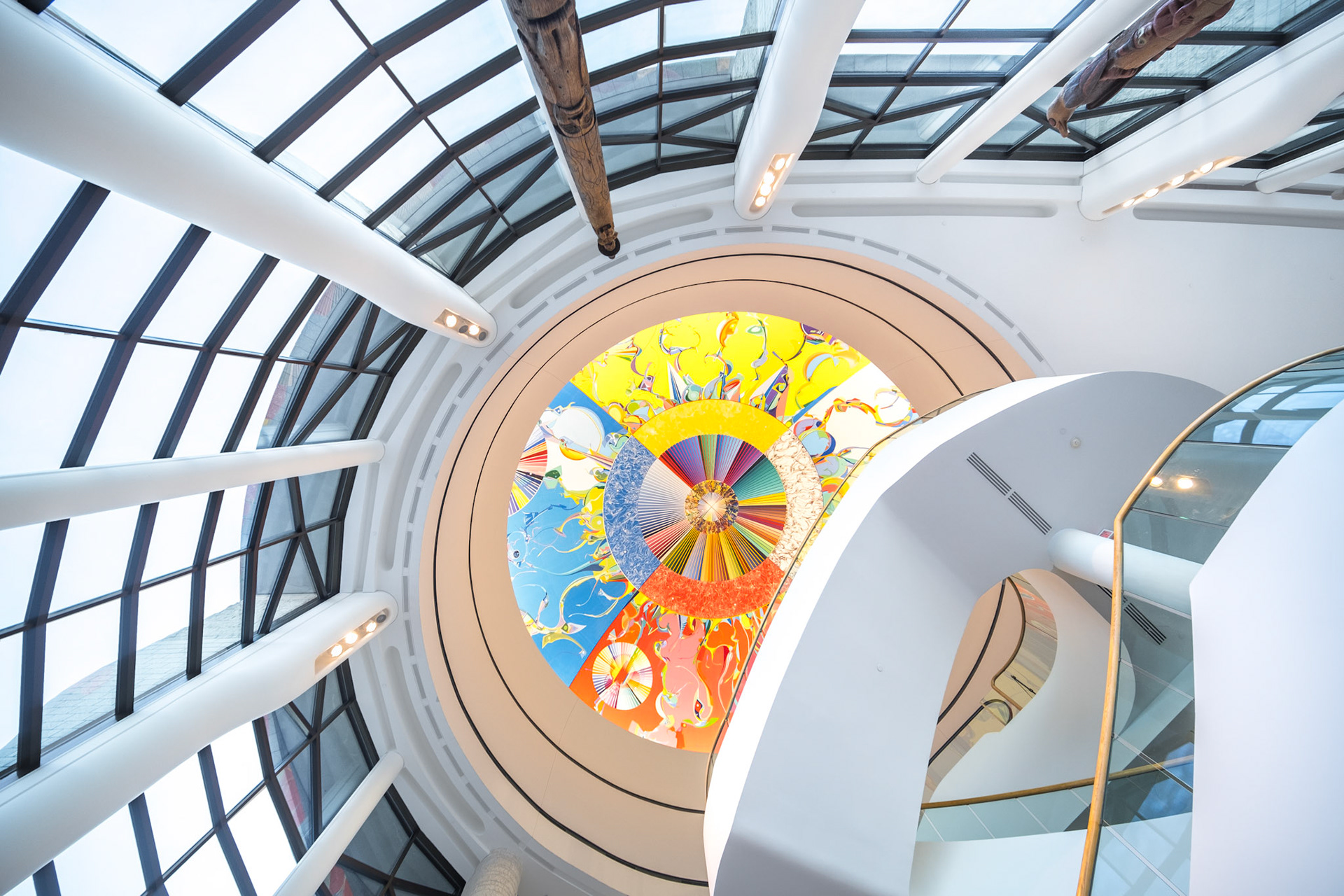
Morning Star by Alex and Dean Janvier
Curatorial Wing
Offices around the perimeter allow natural light for the museum staff while the collections are well protected in the interior.
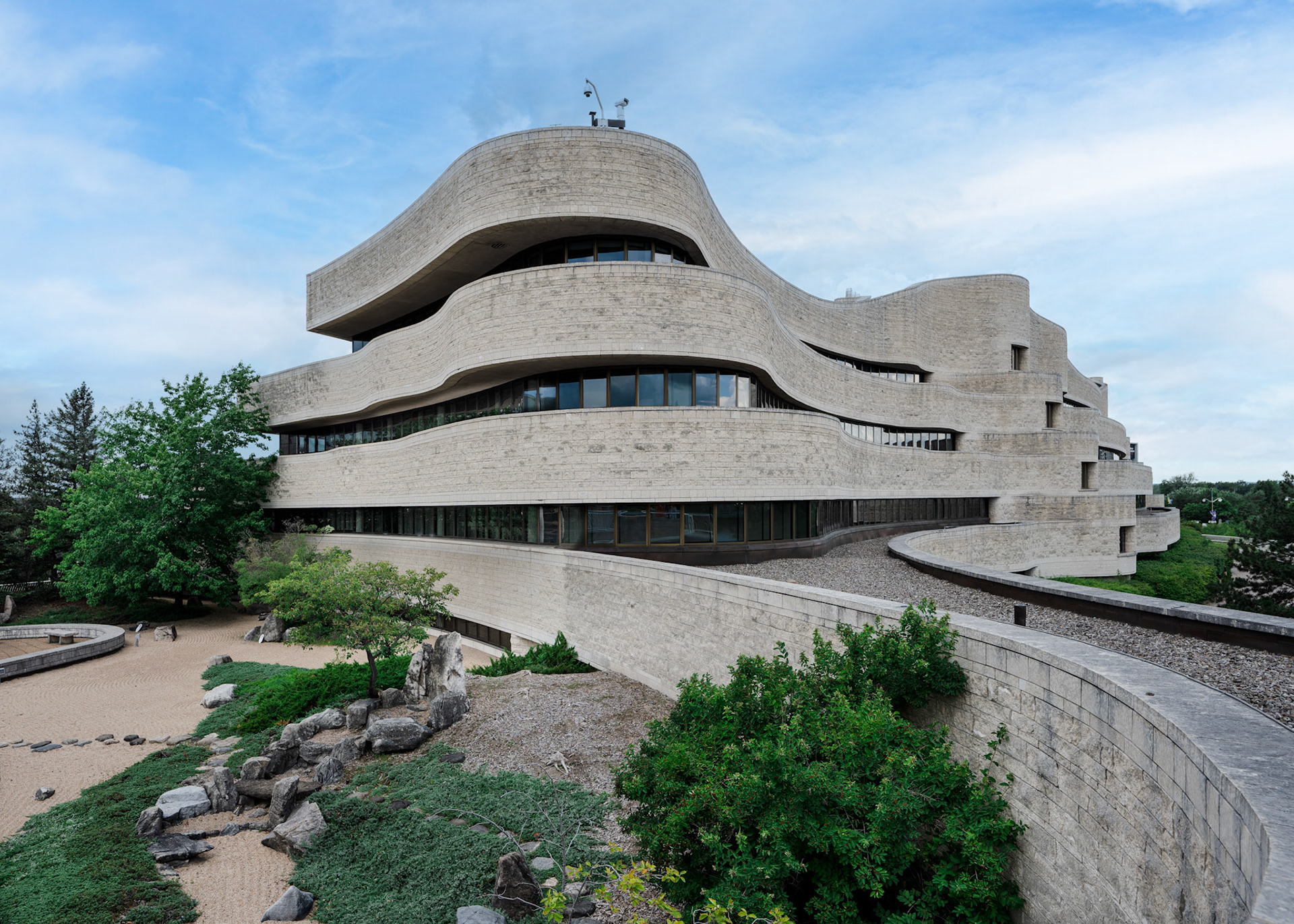
Curatorial wing
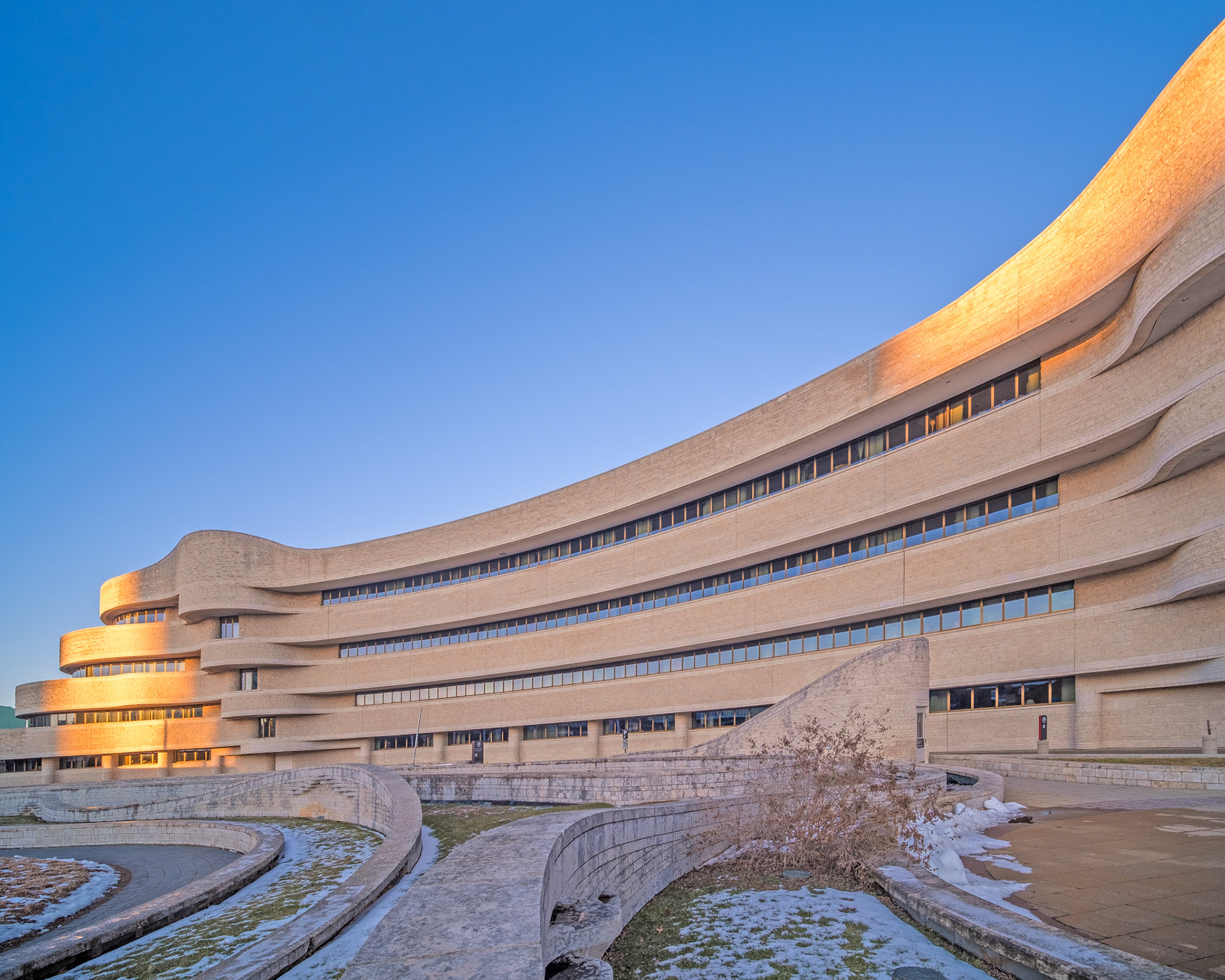
Curatorial wing
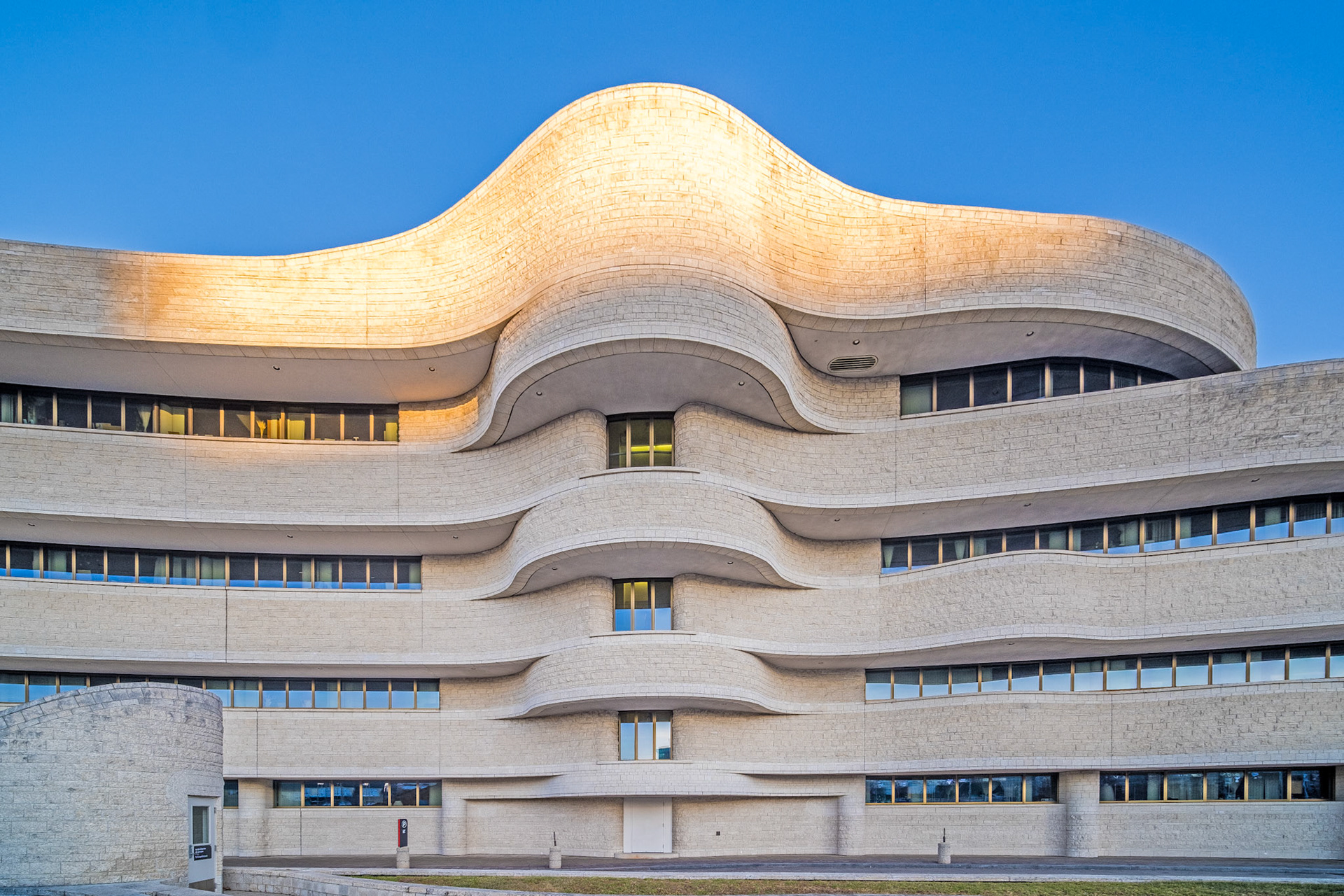
Curatorial wing
You may also like